Science Mapping the Knowledge Domain of Construction Workers’ Safety Behavior
Abstract
1. Introduction
2. Research Methodology
2.1. Literature Search and Selection
2.2. Data Analysis
3. Scientometric Analysis and Results
3.1. Wave of CWSB
3.2. Co-Word Analysis
3.3. Scientific Collaboration Networks in CWSB: Co-Author Analysis
3.3.1. Co-Authorship Network
3.3.2. Network of Countries/Regions
3.3.3. Network of Institutions
3.4. Co-Citation Analysis
3.4.1. Journal Co-Citation Network
3.4.2. Author Co-Citation Network
3.4.3. Document Co-Citation Analysis
4. Cluster Analysis
5. Critical Review
5.1. Conception and Dimension of CWSB
5.2. Critical Influence Factors of CWSB
5.3. Emerging Technologies in CWSB
5.4. Research Gaps and Recommendations
5.4.1. Comprehensive Understanding of Influence Mechanism of CWSB
5.4.2. Long-Term Effectiveness of Safety Interventions
5.4.3. Integration of New Technologies into Safety Programs
6. Conclusions
Author Contributions
Funding
Institutional Review Board Statement
Informed Consent Statement
Data Availability Statement
Conflicts of Interest
References
- Cheng, B.; Fan, C.; Fu, H.; Huang, J.; Chen, H.; Luo, X. Measuring and Computing Cognitive Statuses of Construction Workers Based on Electroencephalogram: A Critical Review. IEEE Trans. Comput. Soc. Syst. 2022, 9, 1644–1659. [Google Scholar] [CrossRef]
- Zhang, Z.; Guo, H.; Gao, P.; Wang, Y.; Fang, Y. Impact of owners’ safety management behavior on construction workers’ unsafe behavior. Saf. Sci. 2023, 158, 105944. [Google Scholar] [CrossRef]
- OSHA. Census of Fatal Occupational Injuries (CFOI)—Current and Revised Data, 2019; OSHA: Washington, DC, USA, 2021.
- HSE. Fatal Injuries in the Workplace in Great Britain; HSE: Moscow, Russia, 2020.
- SWA. Work-Related Traumatic Injury Fatalities; SWA: Canberra, Australia, 2019.
- Zhou, Z.; Goh, Y.M.; Li, Q. Overview and analysis of safety management studies in the construction industry. Saf. Sci. 2015, 72, 337–350. [Google Scholar] [CrossRef]
- Christian, M.S.; Bradley, J.C.; Wallace, J.C.; Burke, M.J. Workplace safety: A meta-analysis of the roles of person and situation factors. J. Appl. Psychol. 2009, 94, 1103. [Google Scholar] [CrossRef]
- Ding, Y.; Liu, M.; Luo, X. Safety compliance checking of construction behaviors using visual question answering. Autom. Constr. 2022, 144, 104580. [Google Scholar] [CrossRef]
- Xia, N.; Xie, Q.; Griffin, M.A.; Ye, G.; Yuan, J. Antecedents of safety behavior in construction: A literature review and an integrated conceptual framework. Accid. Anal. Prev. 2020, 148, 105834. [Google Scholar] [CrossRef]
- Liu, Y.; Ye, G.; Xiang, Q.; Yang, J.; Miang Goh, Y.; Gan, L. Antecedents of construction workers’ safety cognition: A systematic review. Saf. Sci. 2023, 157, 105923. [Google Scholar] [CrossRef]
- Xiang, Q.; Ye, G.; Liu, Y.; Miang Goh, Y.; Wang, D.; He, T. Cognitive mechanism of construction workers’ unsafe behavior: A systematic review. Saf. Sci. 2023, 159, 106037. [Google Scholar] [CrossRef]
- Fang, W.; Love, P.E.D.; Luo, H.; Ding, L. Computer vision for behaviour-based safety in construction: A review and future directions. Adv. Eng. Inform. 2020, 43, 100980. [Google Scholar] [CrossRef]
- Cheng, B.; Luo, X.; Mei, X.; Chen, H.; Huang, J. A Systematic Review of Eye-Tracking Studies of Construction Safety. Front. Neurosci. 2022, 16, 891725. [Google Scholar] [CrossRef]
- Chen, C. Science Mapping: A Systematic Review of the Literature. J. Data Inf. Sci. 2017, 2, 1–40. [Google Scholar] [CrossRef]
- Gómez-Domínguez, V.; Navarro-Mateu, D.; Gómez-Domínguez, T.; Giménez-Espert, M.d.C. How much do we care about teacher job insecurity during the pandemic? A bibliometric review. Front. Public Health 2023, 11, 1098013. [Google Scholar] [CrossRef] [PubMed]
- Antwi-Afari, M.F.; Li, H.; Chan, A.H.S.; Seo, J.; Anwer, S.; Mi, H.-Y.; Wu, Z.; Wong, A.Y.L. A science mapping-based review of work-related musculoskeletal disorders among construction workers. J. Saf. Res. 2023, in press. [CrossRef]
- Li, Y.N.; Li, M.; Sang, P.D. A bibliometric review of studies on construction and demolition waste management by using CiteSpace. Energy Build. 2022, 258, 14. [Google Scholar] [CrossRef]
- Nwaogu, J.M.; Chan, A.P.C.; Hon, C.K.H.; Darko, A. Review of global mental health research in the construction industry A science mapping approach. Eng. Constr. Archit. Manag. 2020, 27, 385–410. [Google Scholar] [CrossRef]
- Li, Q.W.; Long, R.Y.; Chen, H.; Chen, F.Y.; Wang, J.Q. Visualized analysis of global green buildings: Development, barriers and future directions. J. Clean. Prod. 2020, 245, 15. [Google Scholar] [CrossRef]
- Hou, L.; Chen, H.S.; Zhang, G.M.; Wang, X.Y. Deep Learning-Based Applications for Safety Management in the AEC Industry: A Review. Appl. Sci. 2021, 11, 821. [Google Scholar] [CrossRef]
- Lu, K.; Deng, X.; Jiang, X.; Cheng, B.; Tam, V.W. A review on life cycle cost analysis of buildings based on building information modeling. J. Civ. Eng. Manag. 2023, 29, 268–288. [Google Scholar] [CrossRef]
- Tang, M.; Mu, F.; Cui, C.; Zhao, J.-Y.; Lin, R.; Sun, K.; Guan, Y.; Wang, J. Research frontiers and trends in the application of artificial intelligence to sepsis: A bibliometric analysis. Front. Med. 2022, 9, 3968. [Google Scholar] [CrossRef]
- Warren, C.; Birch, G.; Bennett, A.; Varley, P. Methane studies for the Channel Tunnel. Q. J. Eng. Geol. Hydrogeol. 1991, 24, 291–309. [Google Scholar] [CrossRef]
- Haslam, R.A.; Hide, S.A.; Gibb, A.G.F.; Gyi, D.E.; Pavitt, T.; Atkinson, S.; Duff, A.R. Contributing factors in construction accidents. Appl. Ergon. 2005, 36, 401–415. [Google Scholar] [CrossRef] [PubMed]
- Clarke, S. The relationship between safety climate and safety performance: A meta-analytic review. J. Occup. Health Psychol. 2006, 11, 315–327. [Google Scholar] [CrossRef] [PubMed]
- Choudhry, R.M.; Fang, D.P. Why operatives engage in unsafe work behavior: Investigating factors on construction sites. Saf. Sci. 2008, 46, 566–584. [Google Scholar] [CrossRef]
- Mohamed, S. Safety climate in construction site environments. J. Constr. Eng. Manag. 2002, 128, 375–384. [Google Scholar] [CrossRef]
- Paterson, P.; Meurice, F.; Stanberry, L.R.; Glismann, S.; Rosenthal, S.L.; Larson, H.J. Vaccine hesitancy and healthcare providers. Vaccine 2016, 34, 6700–6706. [Google Scholar] [CrossRef]
- Guo, B.H.W.; Yiu, T.W.; Gonzalez, V.A. Predicting safety behavior in the construction industry: Development and test of an integrative model. Saf. Sci. 2016, 84, 1–11. [Google Scholar] [CrossRef]
- Man, S.S.; Chan, A.H.S.; Wong, H.M. Risk-taking behaviors of Hong Kong construction workers—A thematic study. Saf. Sci. 2017, 98, 25–36. [Google Scholar] [CrossRef]
- Li, H.; Lu, M.J.; Hsu, S.C.; Gray, M.; Huang, T. Proactive behavior-based safety management for construction safety improvement. Saf. Sci. 2015, 75, 107–117. [Google Scholar] [CrossRef]
- Fang, W.L.; Ding, L.Y.; Luo, H.B.; Love, P.E.D. Falls from heights: A computer vision-based approach for safety harness detection. Autom. Constr. 2018, 91, 53–61. [Google Scholar] [CrossRef]
- Zaira, M.M.; Hadikusumo, B.H.W. Structural equation model of integrated safety intervention practices affecting the safety behaviour of workers in the construction industry. Saf. Sci. 2017, 98, 124–135. [Google Scholar] [CrossRef]
- Zohar, D. Thirty years of safety climate research: Reflections and future directions. Accid. Anal. Prev. 2010, 42, 1517–1522. [Google Scholar] [CrossRef] [PubMed]
- Choudhry, R.M. Behavior-based safety on construction sites: A case study. Accid. Anal. Prev. 2014, 70, 14–23. [Google Scholar] [CrossRef] [PubMed]
- Shin, M.; Lee, H.S.; Park, M.; Moon, M.; Han, S. A system dynamics approach for modeling construction workers’ safety attitudes and behaviors. Accid. Anal. Prev. 2014, 68, 95–105. [Google Scholar] [CrossRef] [PubMed]
- Seo, J.; Han, S.; Lee, S.; Kim, H. Computer vision techniques for construction safety and health monitoring. Adv. Eng. Inform. 2015, 29, 239–251. [Google Scholar] [CrossRef]
- Fang, D.P.; Wu, C.L.; Wu, H.J. Impact of the Supervisor on Worker Safety Behavior in Construction Projects. J. Manag. Eng. 2015, 31, 12. [Google Scholar] [CrossRef]
- Glendon, A.I.; Litherland, D.K. Safety climate factors, group differences and safety behaviour in road construction. Saf. Sci. 2001, 39, 157–188. [Google Scholar] [CrossRef]
- Han, S.; Lee, S. A vision-based motion capture and recognition framework for behavior-based safety management. Autom. Constr. 2013, 35, 131–141. [Google Scholar] [CrossRef]
- Shi, Y.M.; Du, J.; Ahn, C.R.; Ragan, E. Impact assessment of reinforced learning methods on construction workers’ fall risk behavior using virtual reality. Autom. Constr. 2019, 104, 197–214. [Google Scholar] [CrossRef]
- Andriessen, J. Safe Behavior And Safety Motivation. J. Occup. Accid. 1978, 1, 363–376. [Google Scholar] [CrossRef]
- Marchand, A.; Simard, M.; Carpentier-Roy, M.C.; Ouellet, F. From a unidimensional to a bidimensional concept and measurement of workers’ safety behavior. Scand. J. Work Environ. Health 1998, 24, 293–299. [Google Scholar] [CrossRef]
- Neal, A.; Griffin, M.A. A study of the lagged relationships among safety climate, safety motivation, safety behavior, and accidents at the individual and group levels. J. Appl. Psychol. 2006, 91, 946–953. [Google Scholar] [CrossRef] [PubMed]
- Xia, N.N.; Xie, Q.H.; Hu, X.W.; Wang, X.Q.; Meng, H. A dual perspective on risk perception and its effect on safety behavior: A moderated mediation model of safety motivation, and supervisor’s and coworkers’ safety climate. Accid. Anal. Prev. 2020, 134, 12. [Google Scholar] [CrossRef]
- Larsson, S.; Pousette, A.; Torner, M. Psychological climate and safety in the construction industry-mediated influence on safety behaviour. Saf. Sci. 2008, 46, 405–412. [Google Scholar] [CrossRef]
- Pousette, A.; Larsson, S.; Torner, M. Safety climate cross-validation, strength and prediction of safety behaviour. Saf. Sci. 2008, 46, 398–404. [Google Scholar] [CrossRef]
- Gao, Y.F.; Gonzalez, V.A.; Yiu, T.W. Exploring the Relationship between Construction Workers’ Personality Traits and Safety Behavior. J. Constr. Eng. Manag. 2020, 146, 13. [Google Scholar] [CrossRef]
- Hofmann, D.A.; Morgeson, F.P. Safety-related behavior as a social exchange: The role of perceived organizational support and leader-member exchange. J. Appl. Psychol. 1999, 84, 286–296. [Google Scholar] [CrossRef]
- Meng, X.C.; Zhai, H.Y.; Chan, A.H.S. Development of Scales to Measure and Analyse the Relationship of Safety Consciousness and Safety Citizenship Behaviour of Construction Workers: An Empirical Study in China. Int. J. Environ. Res. Public Health 2019, 16, 1411. [Google Scholar] [CrossRef] [PubMed]
- Zhang, J.J.; Zhai, H.Y.; Meng, X.C.; Wang, W.X.; Zhou, L. Influence of Social Safety Capital on Safety Citizenship Behavior: The Mediation of Autonomous Safety Motivation. Int. J. Environ. Res. Public Health 2020, 17, 866. [Google Scholar] [CrossRef]
- Fang, D.P.; Jiang, Z.M.; Zhang, M.Z.; Wang, H. An experimental method to study the effect of fatigue on construction workers’ safety performance. Saf. Sci. 2015, 73, 80–91. [Google Scholar] [CrossRef]
- Kao, K.Y.; Spitzmueller, C.; Cigularov, K.; Wu, H. Linking Insomnia to Workplace Injuries: A Moderated Mediation Model of Supervisor Safety Priority and Safety Behavior. J. Occup. Health Psychol. 2016, 21, 91–104. [Google Scholar] [CrossRef]
- Leung, M.Y.; Chan, I.Y.S.; Yu, J.Y. Preventing construction worker injury incidents through the management of personal stress and organizational stressors. Accid. Anal. Prev. 2012, 48, 156–166. [Google Scholar] [CrossRef] [PubMed]
- Zhang, M.; Fang, D. A cognitive analysis of why Chinese scaffolders do not use safety harnesses in construction. Constr. Manag. Econ. 2013, 31, 207–222. [Google Scholar] [CrossRef]
- Shin, D.P.; Gwak, H.S.; Lee, D.E. Modeling the predictors of safety behavior in construction workers. Int. J. Occup. Saf. Ergon. 2015, 21, 298–311. [Google Scholar] [CrossRef]
- Li, S.Q.; Wu, X.Y.; Wang, X.Z.; Hu, S.H. Relationship between Social Capital, Safety Competency, and Safety Behaviors of Construction Workers. J. Constr. Eng. Manag. 2020, 146, 10. [Google Scholar] [CrossRef]
- Goh, Y.M.; Sa’adon, N.F.B. Cognitive Factors Influencing Safety Behavior at Height: A Multimethod Exploratory Study. J. Constr. Eng. Manag. 2015, 141, 8. [Google Scholar] [CrossRef]
- Kapp, E.A. The influence of supervisor leadership practices and perceived group safety climate on employee safety performance. Saf. Sci. 2012, 50, 1119–1124. [Google Scholar] [CrossRef]
- He, C.Q.; Jia, G.S.; McCabe, B.; Sun, J.D. Relationship between leader-member exchange and construction worker safety behavior: The mediating role of communication competence. Int. J. Occup. Saf. Ergon. 2021, 27, 371–383. [Google Scholar] [CrossRef]
- Kaufman, B.R.; Cigularov, K.P.; Chen, P.; Hoffmeister, K.; Gibbons, A.M.; Johnson, S.K. Interactive effects of leader justice and support for safety on safety performance. J. Organ. Eff. People Perform. 2014, 1, 296–315. [Google Scholar] [CrossRef]
- Choudhry, R.M.; Fang, D.; Ahmed, S.M. Safety management in construction: Best practices in Hong kong. J. Prof. Issues Eng. Educ. Pract. 2008, 134, 20–32. [Google Scholar] [CrossRef]
- Liang, H.K.; Lin, K.Y.; Zhang, S.J.; Su, Y.K. The Impact of Coworkers’ Safety Violations on an Individual Worker: A Social Contagion Effect within the Construction Crew. Int. J. Environ. Res. Public Health 2018, 15, 773. [Google Scholar] [CrossRef]
- Sun, X.L.; Chong, H.Y.; Liao, P.C.; Fang, D.P.; Wang, Y.Q. A System Dynamics Model of Prevention through Design towards Eliminating Human Error. KSCE J. Civ. Eng. 2019, 23, 1923–1938. [Google Scholar] [CrossRef]
- Leung, M.Y.; Liang, Q.; Olomolaiye, P. Impact of Job Stressors and Stress on the Safety Behavior and Accidents of Construction Workers. J. Manag. Eng. 2016, 32, 10. [Google Scholar] [CrossRef]
- Yang, J.; Ye, G.; Zhang, Z.; Liu, X.; Liu, Y. Linking construction noise to worker safety behavior: The role of negative emotion and regulatory focus. Saf. Sci. 2023, 162, 106093. [Google Scholar] [CrossRef]
- Mneymneh, B.E.; Abbas, M.; Khoury, H. Vision-Based Framework for Intelligent Monitoring of Hardhat Wearing on Construction Sites. J. Comput. Civil. Eng. 2019, 33, 20. [Google Scholar] [CrossRef]
- Fang, W.L.; Zhong, B.T.; Zhao, N.; Love, P.E.; Luo, H.B.; Xue, J.Y.; Xu, S.J. A deep learning-based approach for mitigating falls from height with computer vision: Convolutional neural network. Adv. Eng. Inform. 2019, 39, 170–177. [Google Scholar] [CrossRef]
- Fang, W.L.; Ding, L.Y.; Zhong, B.T.; Love, P.E.D.; Luo, H.B. Automated detection of workers and heavy equipment on construction sites: A convolutional neural network approach. Adv. Eng. Inform. 2018, 37, 139–149. [Google Scholar] [CrossRef]
- Ding, L.Y.; Fang, W.L.; Luo, H.B.; Love, P.E.D.; Zhong, B.T.; Ouyang, X. A deep hybrid learning model to detect unsafe behavior: Integrating convolution neural networks and long short-term memory. Autom. Constr. 2018, 86, 118–124. [Google Scholar] [CrossRef]
- Awolusi, I.; Marks, E.; Hallowell, M. Wearable technology for personalized construction safety monitoring and trending: Review of applicable devices. Autom. Constr. 2018, 85, 96–106. [Google Scholar] [CrossRef]
- Ke, J.; Zhang, M.; Luo, X.; Chen, J. Monitoring distraction of construction workers caused by noise using a wearable Electroencephalography (EEG) device. Autom. Constr. 2021, 125, 103598. [Google Scholar] [CrossRef]
- Chen, J.; Song, X.; Lin, Z. Revealing the “Invisible Gorilla” in construction: Estimating construction safety through mental workload assessment. Autom. Constr. 2016, 63, 173–183. [Google Scholar] [CrossRef]
- Hasanzadeh, S.; Esmaeili, B.; Dodd, M.D. Measuring the Impacts of Safety Knowledge on Construction Workers’ Attentional Allocation and Hazard Detection Using Remote Eye-Tracking Technology. J. Manag. Eng. 2017, 33, 04017024. [Google Scholar] [CrossRef]
- Noghabaei, M.; Han, K.; Albert, A. Feasibility Study to Identify Brain Activity and Eye-Tracking Features for Assessing Hazard Recognition Using Consumer-Grade Wearables in an Immersive Virtual Environment. J. Constr. Eng. Manag. 2021, 147, 04021104. [Google Scholar] [CrossRef]
- Xu, Q.; Chong, H.-Y.; Liao, P.-c. Exploring eye-tracking searching strategies for construction hazard recognition in a laboratory scene. Saf. Sci. 2019, 120, 824–832. [Google Scholar] [CrossRef]
- Ray, S.J.; Teizer, J. Real-time construction worker posture analysis for ergonomics training. Adv. Eng. Inform. 2012, 26, 439–455. [Google Scholar] [CrossRef]
- Zhang, M.; Cao, T.; Zhao, X. Applying sensor-based technology to improve construction safety management. Sensors 2017, 17, 1841. [Google Scholar] [CrossRef] [PubMed]
- Hwang, S.; Seo, J.; Jebelli, H.; Lee, S. Feasibility analysis of heart rate monitoring of construction workers using a photoplethysmography (PPG) sensor embedded in a wristband-type activity tracker. Autom. Constr. 2016, 71, 372–381. [Google Scholar] [CrossRef]
- Zhao, D.; Lucas, J. Virtual reality simulation for construction safety promotion. Int. J. Inj. Control Saf. Promot. 2015, 22, 57–67. [Google Scholar] [CrossRef]
- Le, Q.T.; Pedro, A.; Park, C.S. A social virtual reality based construction safety education system for experiential learning. J. Intell. Robot. Syst. 2015, 79, 487–506. [Google Scholar] [CrossRef]
- Rokooei, S.; Shojaei, A.; Alvanchi, A.; Azad, R.; Didehvar, N. Virtual reality application for construction safety training. Saf. Sci. 2023, 157, 105925. [Google Scholar] [CrossRef]
- Sacks, R.; Perlman, A.; Barak, R. Construction safety training using immersive virtual reality. Constr. Manag. Econ. 2013, 31, 1005–1017. [Google Scholar] [CrossRef]
- Joshi, S.; Hamilton, M.; Warren, R.; Faucett, D.; Tian, W.; Wang, Y.; Ma, J. Implementing Virtual Reality technology for safety training in the precast/prestressed concrete industry. Appl. Ergon. 2021, 90, 103286. [Google Scholar] [CrossRef] [PubMed]
- Kim, N.; Kim, J.; Ahn, C.R. Predicting workers’ inattentiveness to struck-by hazards by monitoring biosignals during a construction task: A virtual reality experiment. Adv. Eng. Inform. 2021, 49, 101359. [Google Scholar] [CrossRef]
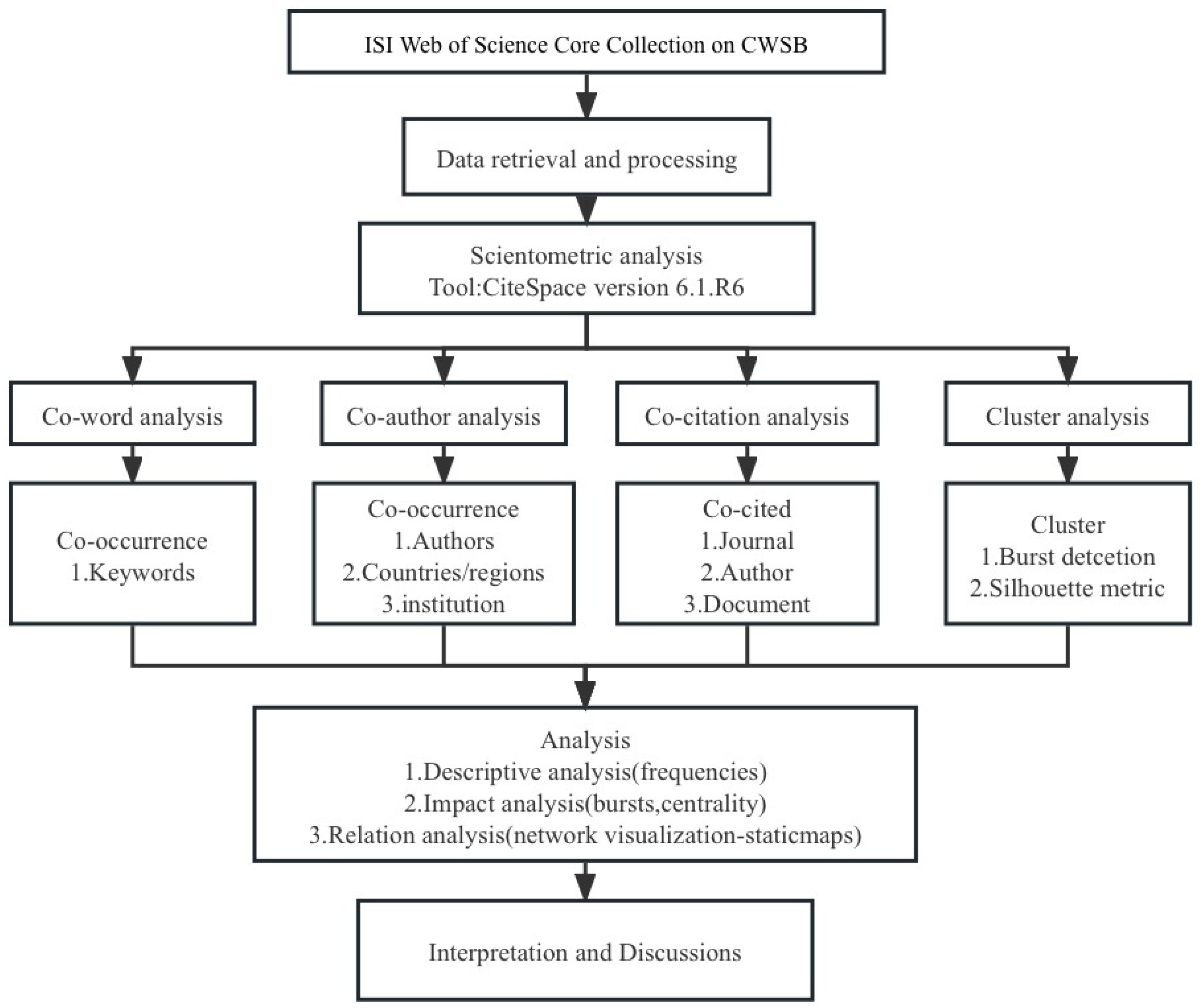
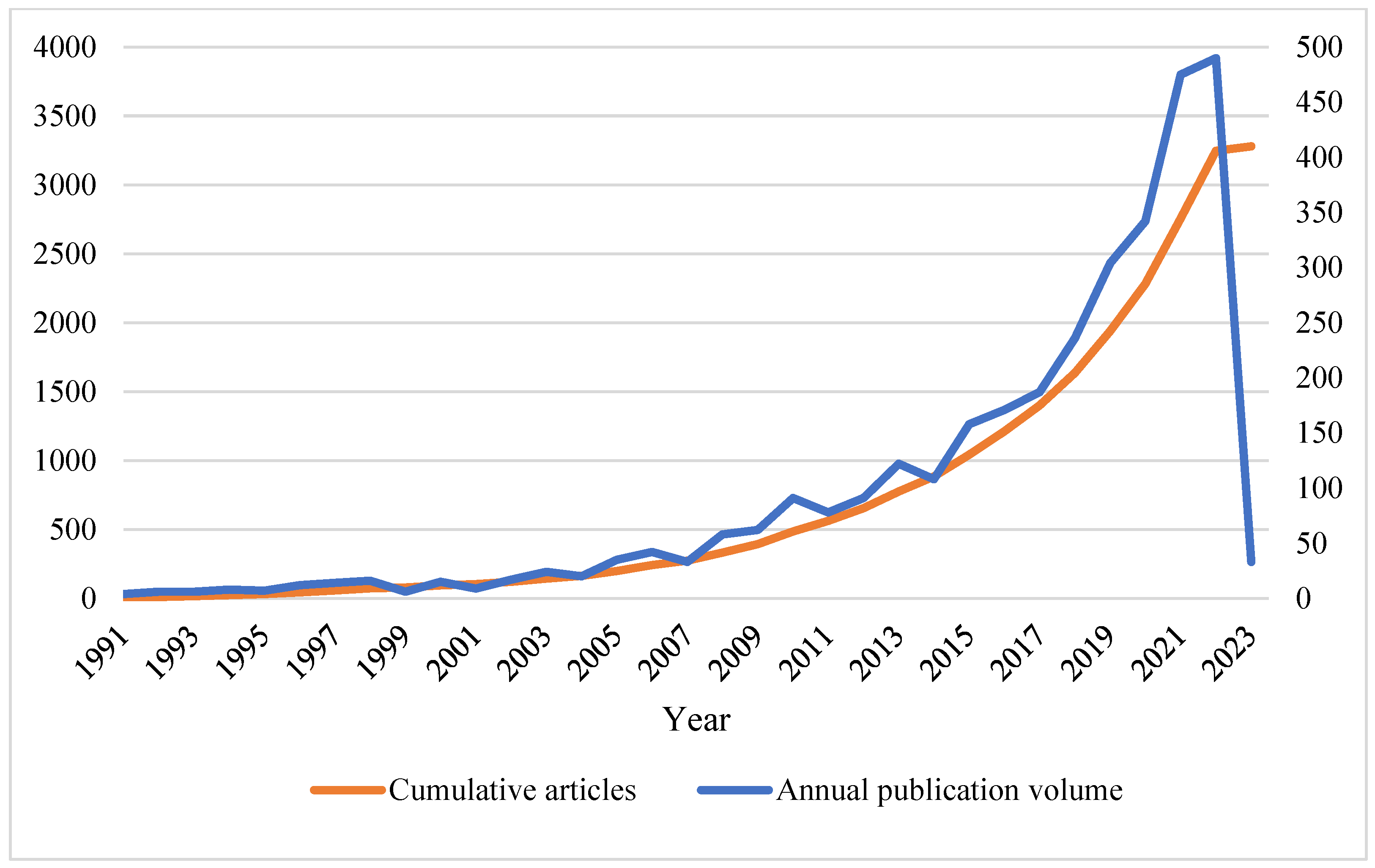

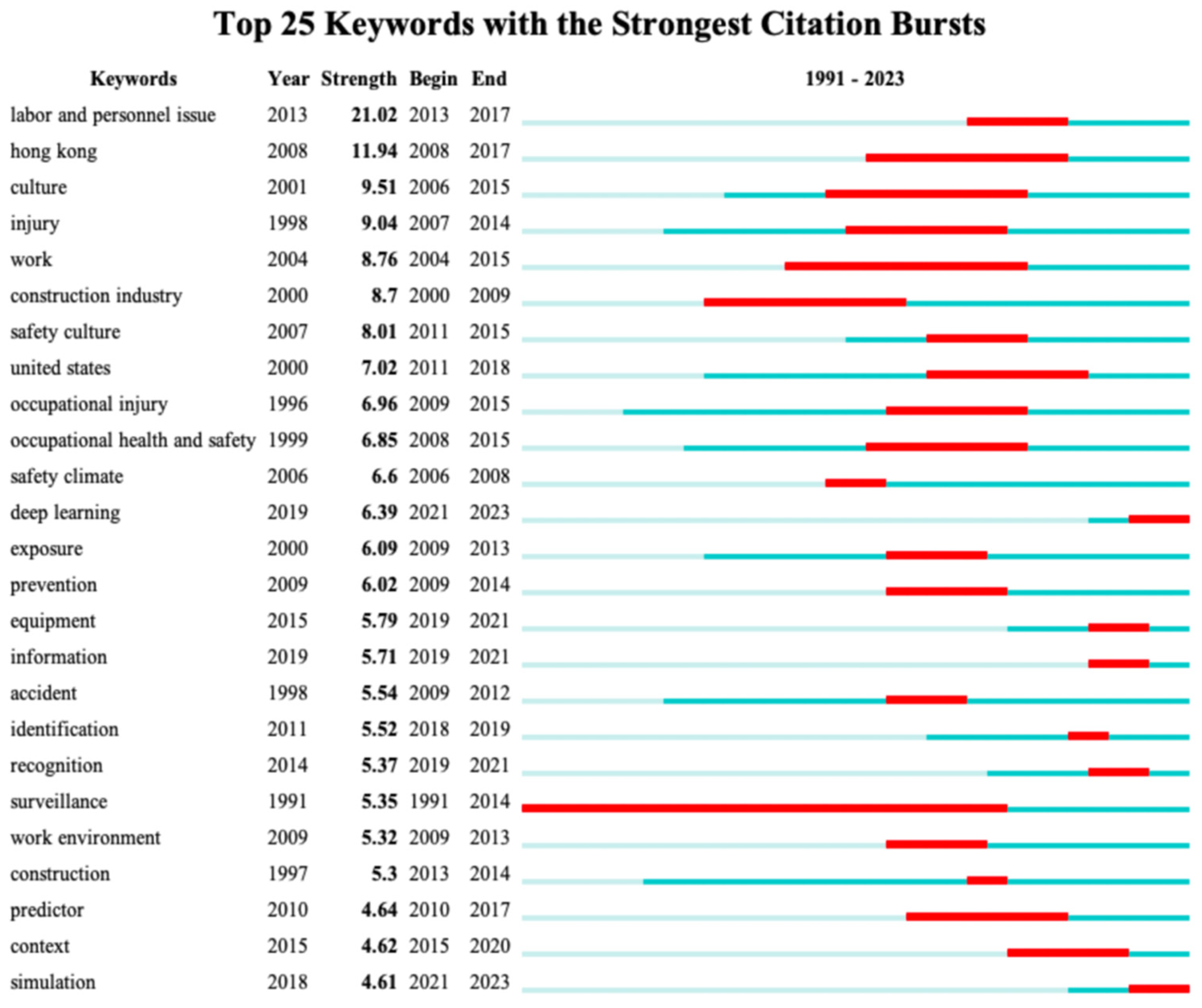
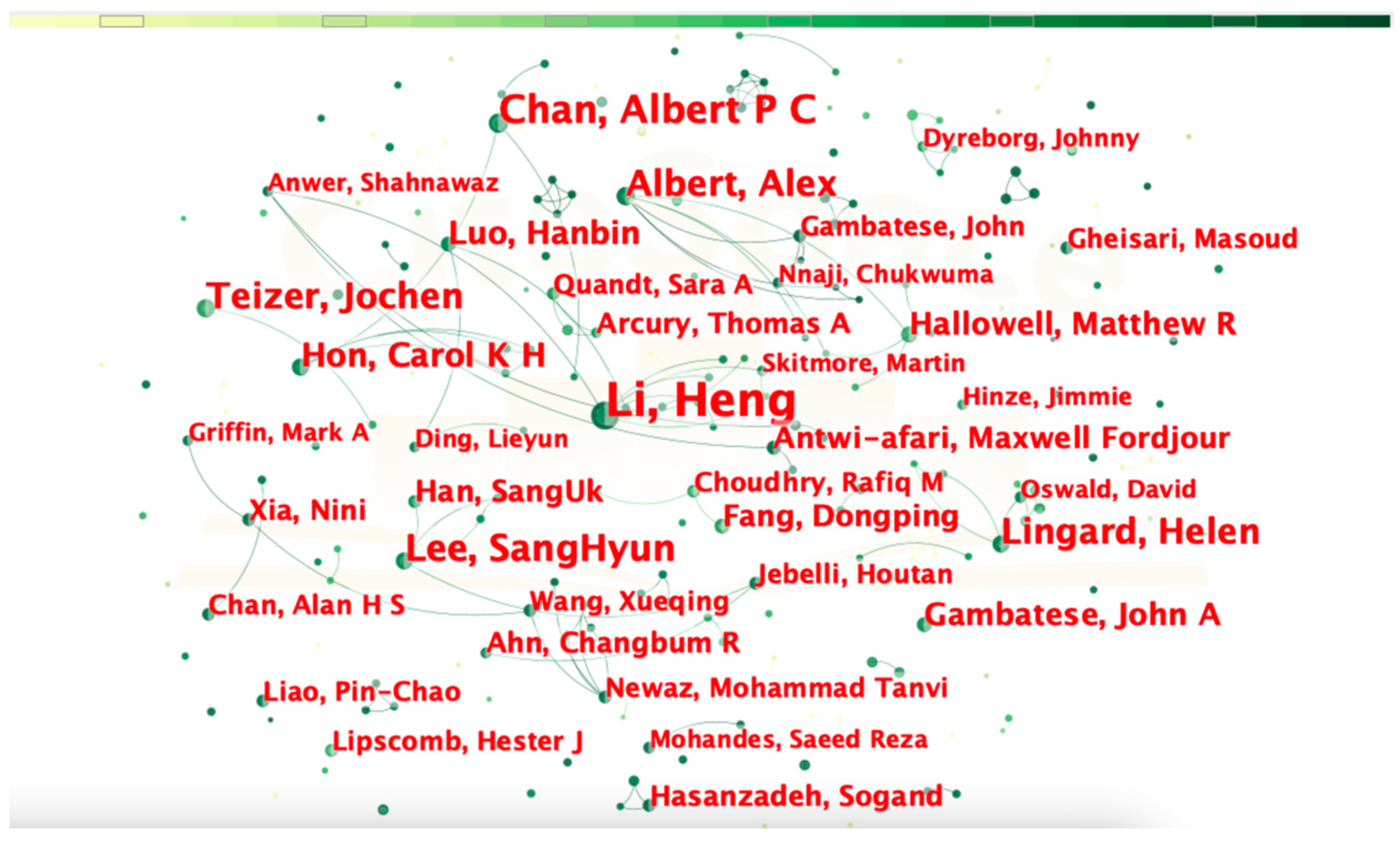
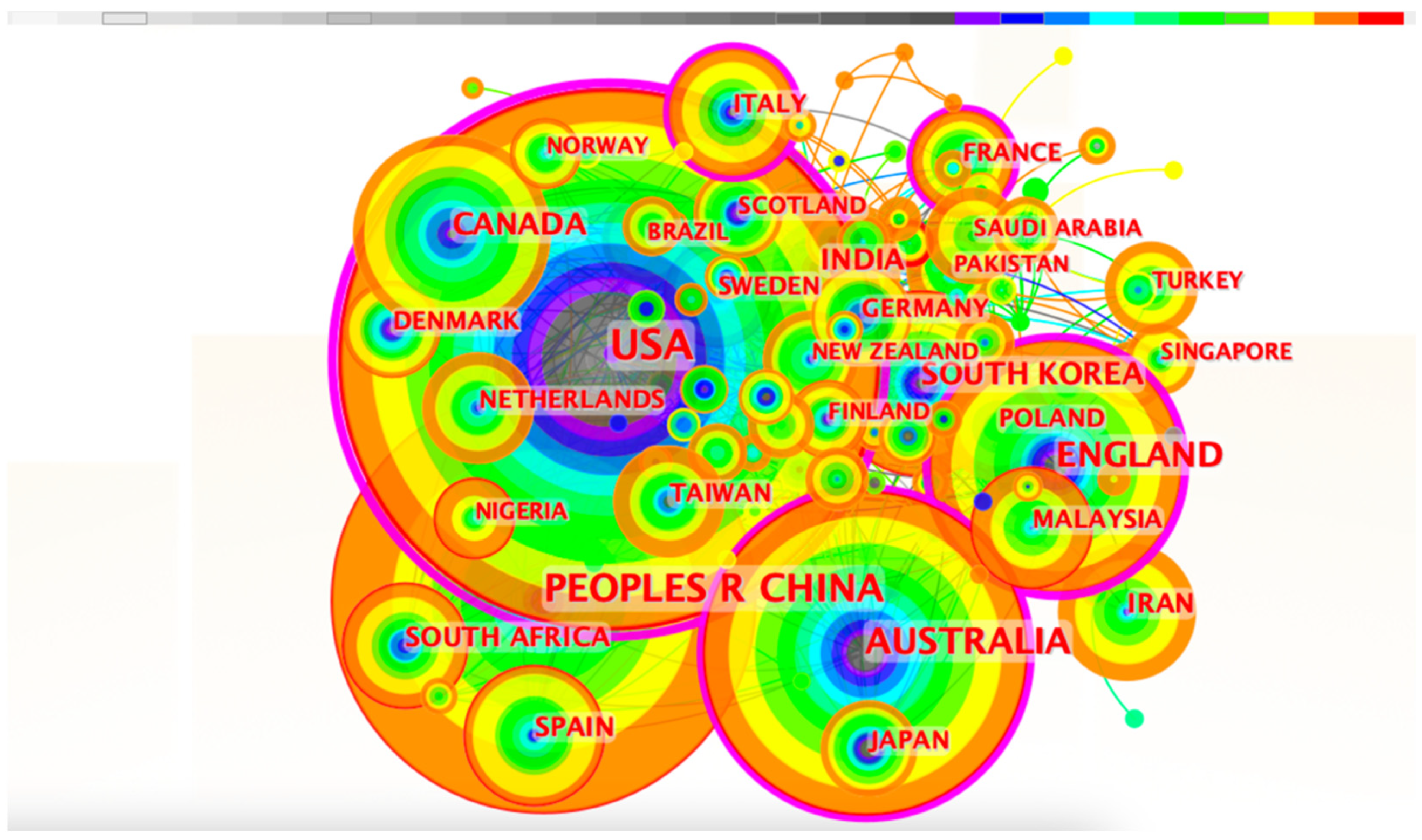
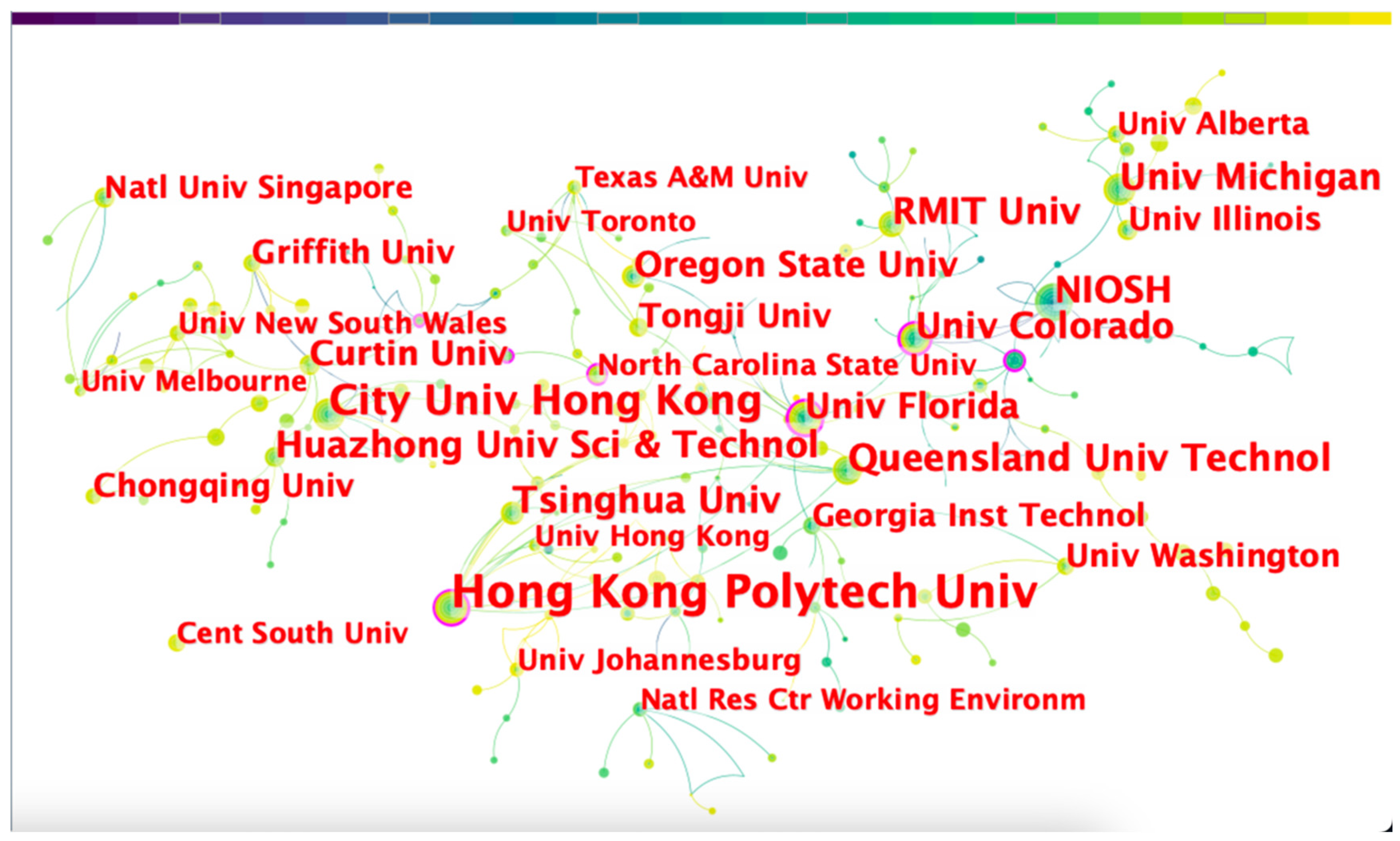
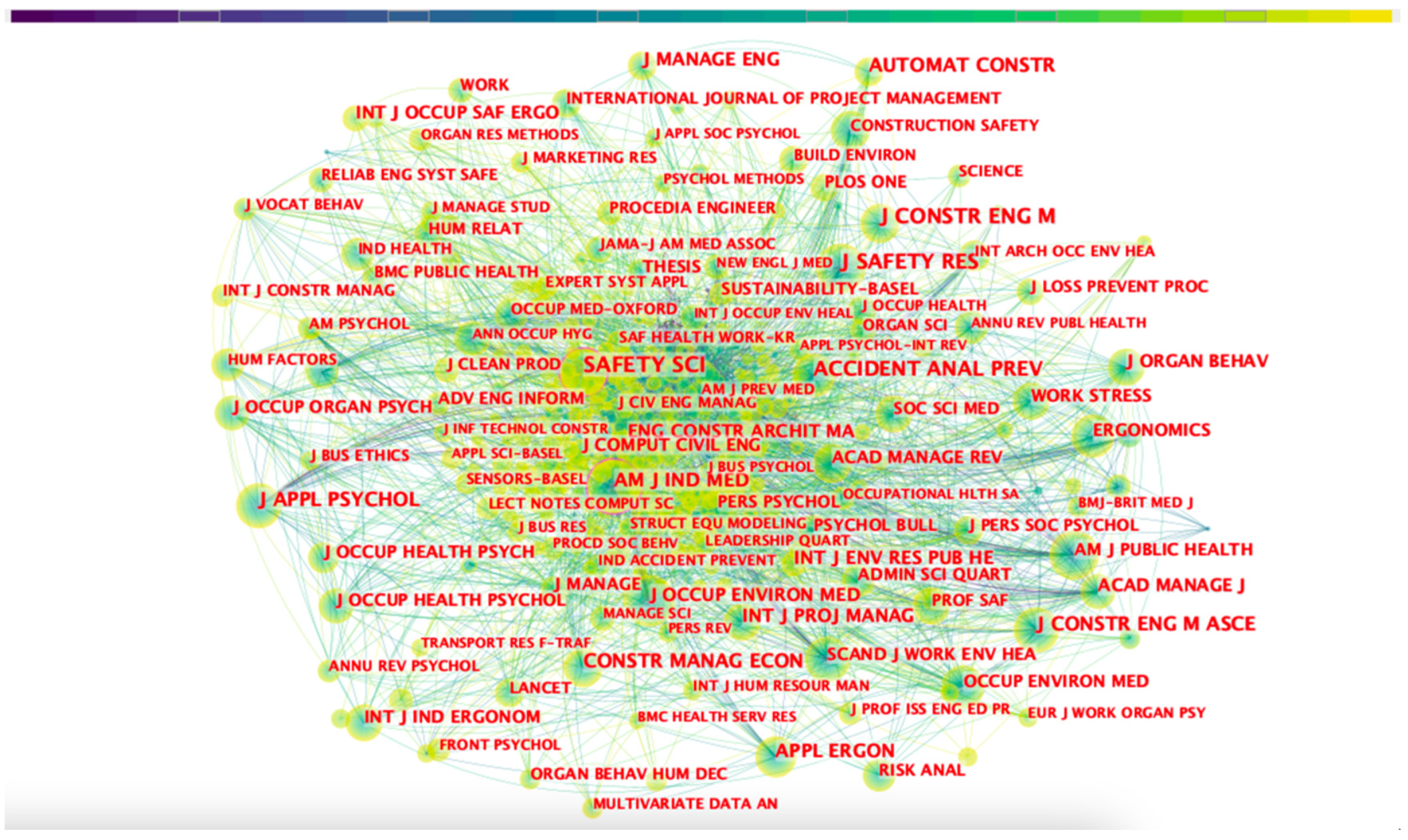
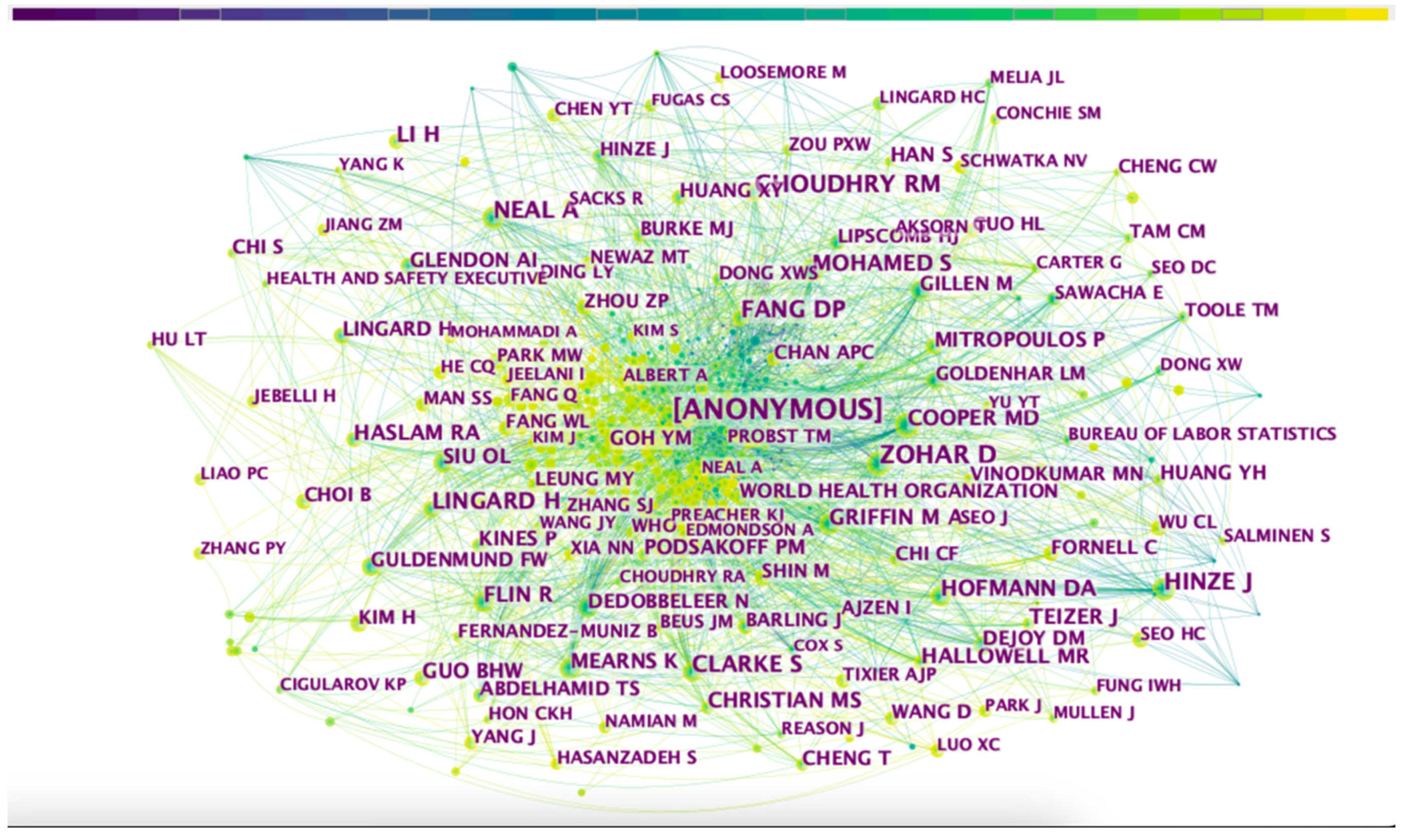
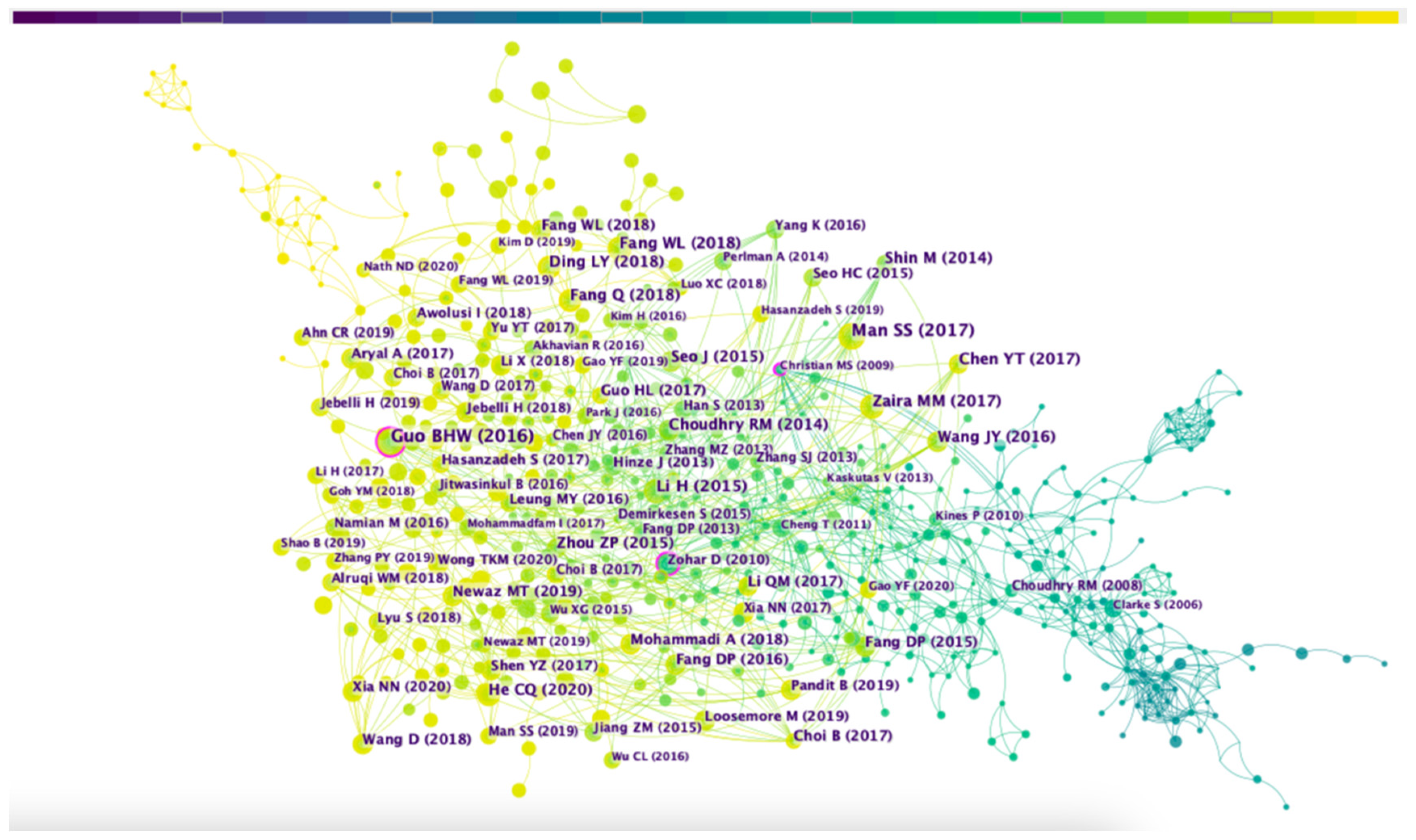
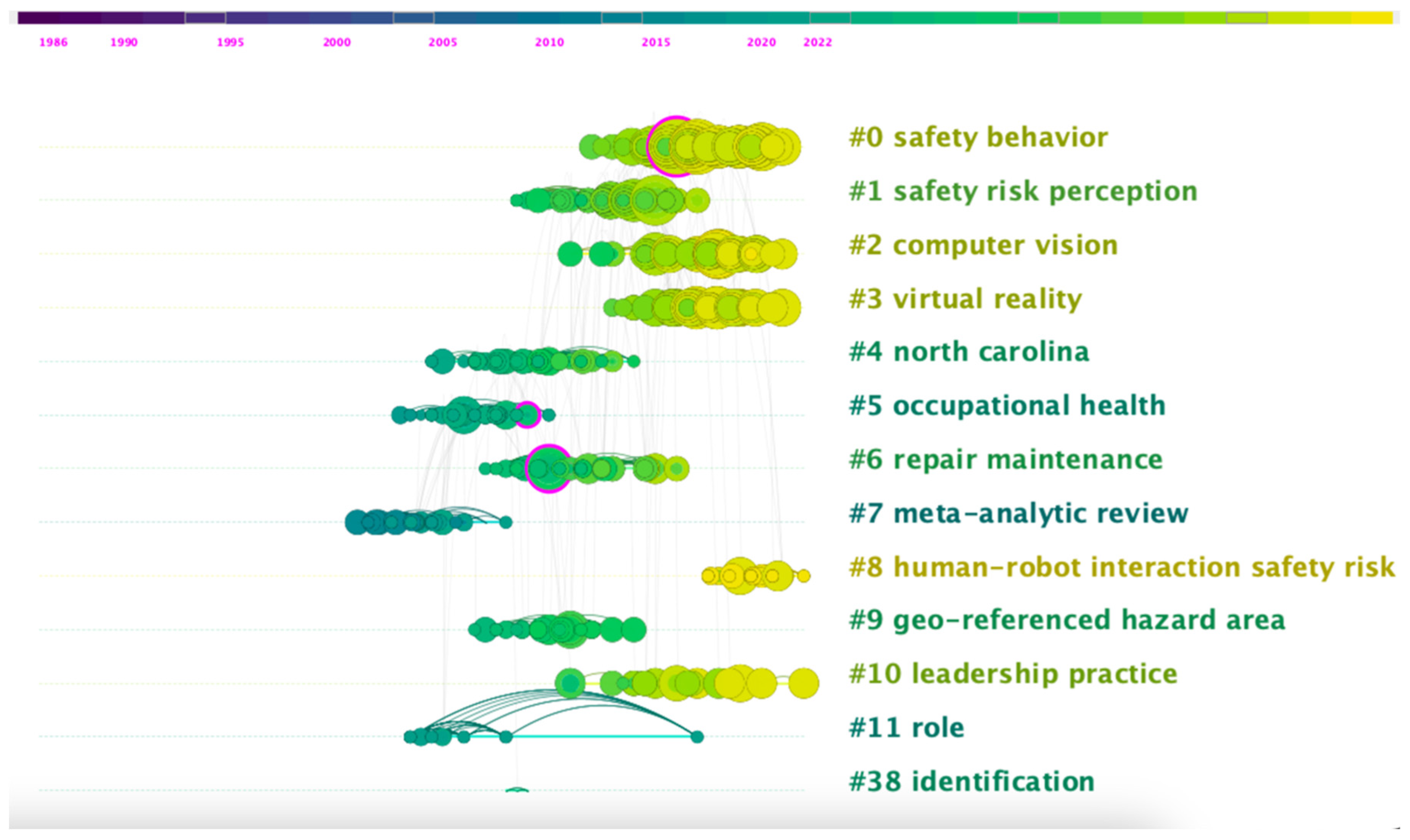
| Author | Institution | Country | Count | Percent |
|---|---|---|---|---|
| Li H | Hong Kong Polytechnic University | China | 38 | 1.16% |
| Chan APC | Hong Kong Polytechnic University | China | 27 | 0.82% |
| Lee S | University of Michigan | United States | 27 | 0.82% |
| Lingard H | Royal Melbourne Institute of Technology | Australia | 26 | 0.79% |
| Han S | Kangwon National University | South Korea | 21 | 0.64% |
| Teizer J | Aarhus University | Denmark | 20 | 0.61% |
| Chan AHS | City University of Hong Kong | China | 19 | 0.58% |
| Hon CKH | Queensland University of Technology (QUT) | Australia | 19 | 0.58% |
| Albert A | North Carolina State University | United States | 18 | 0.55% |
| Fang DP | Kunshan Integrated TCM & Western Med Hosp | China | 18 | 0.55% |
| Journal Name | Number of Articles Distributed by Journal | Percent |
|---|---|---|
| Safety Science | 213 | 6.49% |
| Journal of Construction Engineering and Management | 164 | 5.00% |
| International Journal of Environmental Research and Public Health | 117 | 3.57% |
| Automation In Construction | 98 | 2.99% |
| Engineering Construction and Architectural Management | 62 | 1.89% |
| Journal of Safety Research | 59 | 1.80% |
| Sustainability | 57 | 1.74% |
| International Journal of Occupational Safety and Ergonomics | 53 | 1.62% |
| American Journal of Industrial Medicine | 49 | 1.49% |
| Construction Management and Economics | 41 | 1.25% |
| Journal of Management in Engineering | 32 | 0.98% |
| Work: A Journal of Prevention Assessment Rehabilitation | 31 | 0.95% |
| Accident Analysis and Prevention | 30 | 0.91% |
| Journal of Construction Engineering and Management Asce | 29 | 0.88% |
| Journal of Computing in Civil Engineering | 28 | 0.85% |
| No. | Total Citations | Article | Year | First Author |
|---|---|---|---|---|
| 1 | 566 | Contributing factors in construction accidents | 2005 | Haslam, et al. |
| 2 | 555 | The relationship between safety climate and safety performance: A meta-analytic review | 2006 | Clarke, et al. |
| 3 | 418 | Why operatives engage in unsafe work behavior: Investigating factors on construction sites | 2008 | Choudhry, et al. |
| 4 | 376 | Safety climate in construction site environments | 2002 | Mohamed, et al. |
| 5 | 369 | Vaccine hesitancy and healthcare providers | 2006 | Paterson, et al. |
| Cluster ID | Size | Silhouette | Cluster Label (LLR) | Alternative Label | Representative Document | Mean Year |
|---|---|---|---|---|---|---|
| #0 | 105 | 0.928 | safety behavior | mediating role; coping behavior; risk-taking behavior; construction worker safety behavior | Yang, J (2021) | 2017 |
| #1 | 70 | 0.85 | safety risk perception | hazard recognition; training transfer; safety training outcome; workers perspective | Namian, M (2016) | 2013 |
| #2 | 66 | 0.937 | computer vision | using computer vision; unsafe behaviour; ubiquitous site photo; learning-based risk analysis | Pham, HTTL (2021) | 2017 |
| #3 | 65 | 0.881 | safety behavior | virtual reality; wearable sensor; struck-by hazard; construction task | Lee, BG (2021) | 2017 |
| #4 | 59 | 0.943 | north carolina | hispanic construction worker; latina manual worker; work organization; occupational risk | Marin, LS (2015) | 2009 |
| #5 | 55 | 0.863 | occupational health | new tool; multiple source; cosmopolitan construction project; mixed method | Lingard, HC (2010) | 2007 |
| #6 | 46 | 0.871 | repair maintenance | minor alteration; neural network model | Gurcanli, GE (2013) | 2011 |
| #7 | 42 | 0.975 | meta-analytic review | dispositional approaches; accident involvement; contrasting perceptual attitudinal; engaging employees safety participation | Clarke, S (2006) | 2003 |
| #8 | 30 | 0.986 | human-robot interaction safety risk | assessment tool; evaluative safety training; workforce development; bests practice strategies | Okpala, I (2023) | 2019 |
| #9 | 28 | 0.911 | geo-referenced hazard area | building information modeling; rule checking; using range point cloud data; protective equipment planning | Teizer, J (2015) | 2010 |
| #10 | 17 | 0.974 | leadership practice | construction workgroup; communication practice; missing link; training intervention | Newaz, MT (2019) | 2016 |
| #11 | 13 | 0.997 | role | production; empirical case study; teamwork practice; cognitive model | Mitropoulos, P’Takis’ (2009) | 2006 |
| #38 | 4 | 0.997 | identification | high-performance sustainable construction project; safety risk | Fortunato, BR (2012) | 2008 |
Disclaimer/Publisher’s Note: The statements, opinions and data contained in all publications are solely those of the individual author(s) and contributor(s) and not of MDPI and/or the editor(s). MDPI and/or the editor(s) disclaim responsibility for any injury to people or property resulting from any ideas, methods, instructions or products referred to in the content. |
© 2023 by the authors. Licensee MDPI, Basel, Switzerland. This article is an open access article distributed under the terms and conditions of the Creative Commons Attribution (CC BY) license (https://creativecommons.org/licenses/by/4.0/).
Share and Cite
Cheng, B.; Wei, Y.; Li, H.; Huang, J.; Chen, H. Science Mapping the Knowledge Domain of Construction Workers’ Safety Behavior. Buildings 2023, 13, 1365. https://doi.org/10.3390/buildings13061365
Cheng B, Wei Y, Li H, Huang J, Chen H. Science Mapping the Knowledge Domain of Construction Workers’ Safety Behavior. Buildings. 2023; 13(6):1365. https://doi.org/10.3390/buildings13061365
Chicago/Turabian StyleCheng, Baoquan, Yuhu Wei, Hujun Li, Jianling Huang, and Huihua Chen. 2023. "Science Mapping the Knowledge Domain of Construction Workers’ Safety Behavior" Buildings 13, no. 6: 1365. https://doi.org/10.3390/buildings13061365
APA StyleCheng, B., Wei, Y., Li, H., Huang, J., & Chen, H. (2023). Science Mapping the Knowledge Domain of Construction Workers’ Safety Behavior. Buildings, 13(6), 1365. https://doi.org/10.3390/buildings13061365









